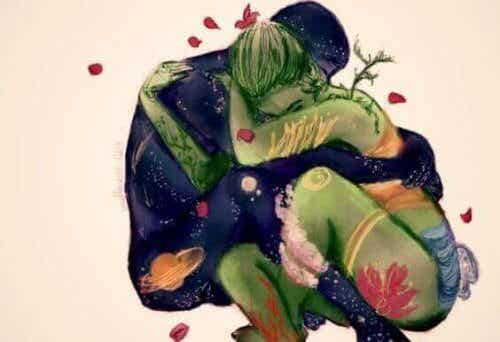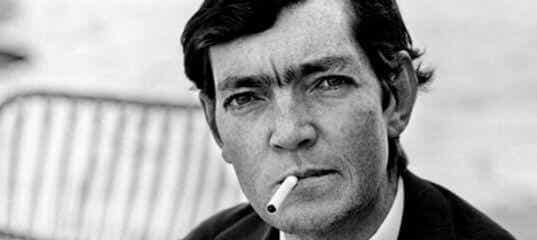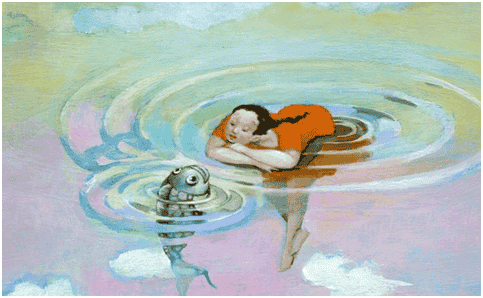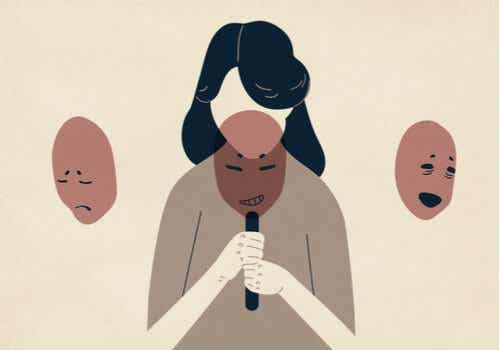
Last update: April 05, 2018
We have the bad habit, inherited from philosophy, of opposing reason to emotions, as if the latter altered reasoning. We attribute to emotions that hedonistic, transcendental and irrational character that makes us think they are useless. But this is a serious mistake, emotions play a very important role, they help us direct our behavior and act quickly. Among them, the most important are the primary emotions: surprise, disgust, fear, joy, sadness and anger.
These primary emotions appear during the natural development of any person regardless of the context in which they develop. In general, they consist of processes related to evolution and adaptation, which have an innate, universal neuronal substrate and a characteristic affective state, which we could call feeling.
Primary emotions: characteristics
The surprise
Surprise can be defined as a reaction caused by an unexpected, new or strange event. That is to say, when a stimulus appears that the subject does not contemplate in his predictions or in his schemes. The subjective experience that accompanies it is a feeling of uncertainty along with a state in which the person feels a mental block.
As for physiological reactions, we experience a decrease in heart rate, an increase in muscle tone and a respiratory amplitude. In addition, a high tone of voice comes out, as well as spontaneous vocalizations.
The function of the surprise is to empty the work memory of all residual activities to face the unexpected stimulus. This state, therefore, activates the processes of attention, exploration behavior and curiosity. This emotion is often followed by another emotion that depends on the quality of the unexpected stimulus, thus showing its positivity (cheerfulness) or negativity (anger).
Disgust
Disgust is one of the primary emotions presented in Darwin's works on animal emotion. It is characterized by a feeling of repulsion or evasion in the face of the possibility, real or imaginary, of ingesting a harmful substance, which has contaminating properties. The subjective feeling is a severe contempt and a marked aversion to the stimulus.
The central physiological effects are the appearance of various gastrointestinal disorders accompanied by nausea. Furthermore, we observe a general increase in activation; visible through increased heart and respiratory rate, skin conductance and muscle tension.
The adaptive function performed by disgust is to reject all stimuli that can cause intoxication. Nausea and malaise help to avoid any ingestion that is harmful to the body. Over time, moreover, this emotion has also taken on a social character, rejecting those social stimuli that are toxic to us.
Fear
Among the primary emotions, fear is the most studied in animals and humans. It is a negative emotional state with a very high activation that incites evasion and escape from dangerous situations. It is a feeling of great tension along with a concern for one's own safety and health.
Physiological correlates show us a rapid increase in activation and preparation for escape. Cardiac activity increases and respiratory activity accelerates, producing shallow and irregular breathing.
Fear is an evolutionary legacy that has obvious survival value. This emotion is useful for preparing the body and implementing escape or challenge behaviors in the face of potentially dangerous stimuli. In addition, it facilitates the learning of new responses that take the person away from danger.
The joy
Joy, among the primary emotions, is perhaps the most positive: it is directly associated with pleasure and happiness. This appears, for example, in response to the resolution of a personal goal or in the face of the alleviation of a state of malaise. Depending on the way we manifest it, it may seem that it does not perform any function for our survival other than being a mere reflection of our inner state.
However, happiness is one of the systems the body has to stimulate action. Additionally, it serves as a reward for self-beneficial behaviors. When we carry out an action that satisfies a goal, happiness is triggered, and thanks to it this behavior will be repeated to return to experiencing that feeling of pleasure. It is perhaps the most natural energizer we can count on.
On a physiological level, we feel an increase in heart rate and a greater respiratory rate. In the brain, on the other hand, there is a greater release of endorphins and dopamine.
The sadness
Among the primary emotions, sadness embodies greater negativity. This emotion is characterized by a decline in mood and a significant reduction in the level of cognitive and behavioral activity. Despite the bad reputation that this emotion has, it fulfills the same or more important functions than many other primary emotions.
The function of sadness is to act in situations where the individual is helpless or cannot carry out any direct action to find a solution to what grieves him, such as the death of a loved one. For this reason, sadness reduces the level of activity, with the aim of economizing the tools and avoiding unnecessary efforts.
Furthermore, it acts in a self-protective way, generating a perceptual filter that focuses attention on oneself and not on the harmful stimulus. And most importantly, it encourages the search for social support that facilitates the removal from the situation of hardship.
Anger
Anger is the feeling that emerges when the person sees himself submitted to situations that produce frustration or that are negative. The experience that emerges is rather unpleasant, and we also experience a tension that leads us to act. It is an emotion with many facets and many times ambiguous, since it can be more or less justified according to the situation.
On a physiological level, we see an excessive increase in activation and a preparation for action. We observe an increase in cardiac activity, muscle tone and respiratory amplitude. Also, it has a significant increase in adrenaline in the blood, which in turn will increase cognitive tension.
Anger has a clear evolutionary function, it brings us the necessary resources to deal with a frustrating situation. When we are faced with a danger or overcome a challenge, this supply of resources to increase activation helps us achieve success. If even after the onset of anger the goal is not reached, sadness will appear at that moment; to solve the problem through other tools.
Whether they have a positive, negative or neutral value, the truth is that all emotions favor our survival. On the other hand, they also carry the danger, due to their intensity, of influencing our behavior. It is in these cases that emotional regulation acquires a very important role, since it can ward off negative elements.


























